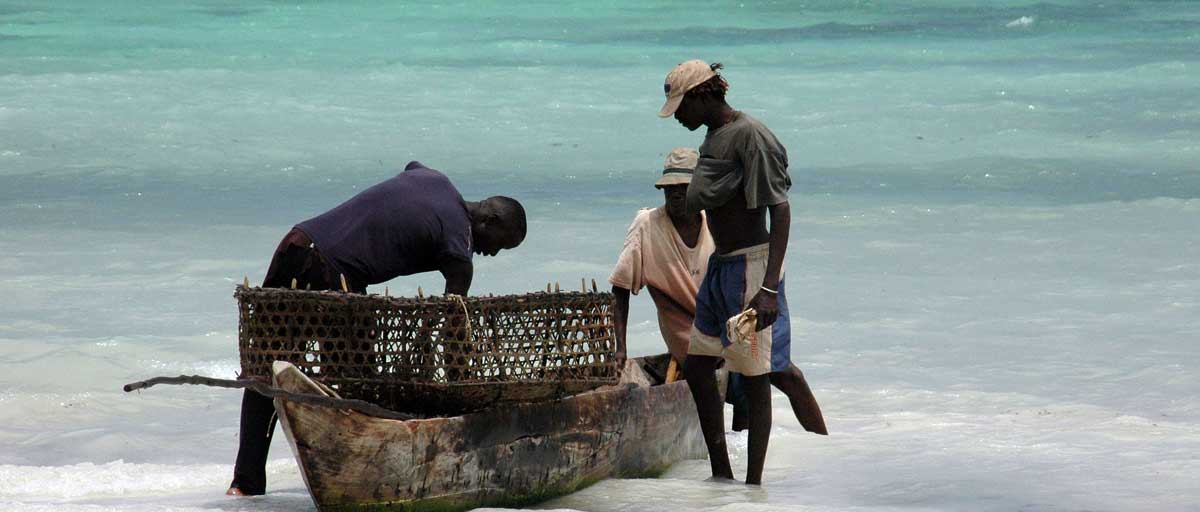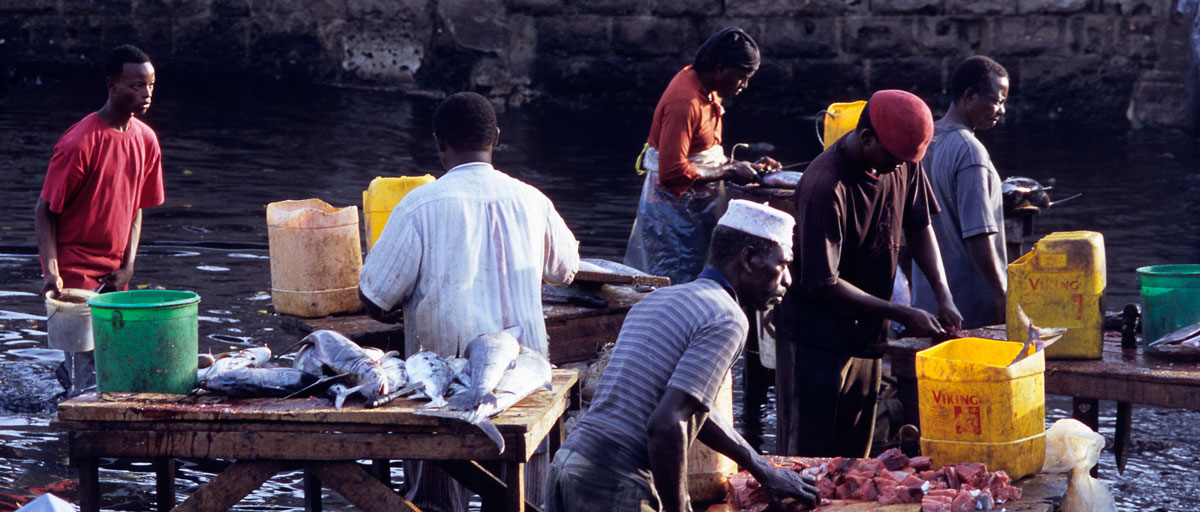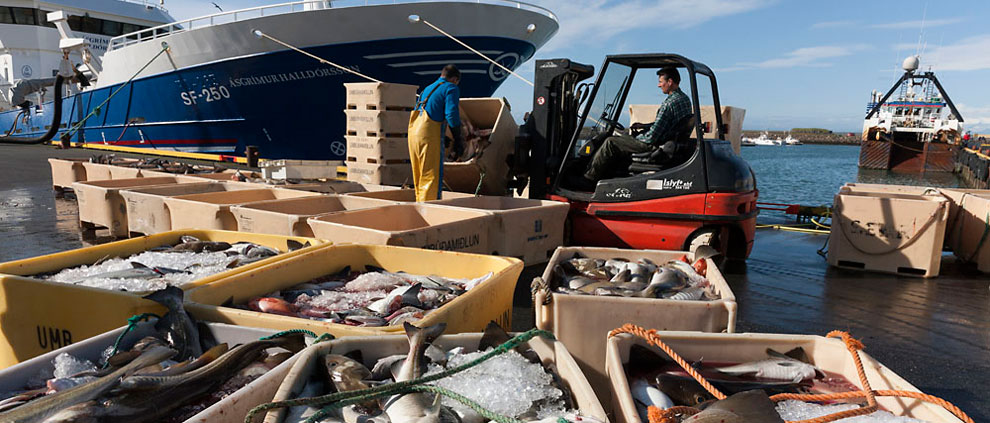Bildtext får vara max två rader text. Hela texten ska högerjusteras om den bara ska innehålla fotobyline! Photo: B. Christensen/Azote
climate change
Fewer fish for least developed countries
Fisheries in least developed countries among world’s most vulnerable to climate change
- Fisheries in least developed countries and small island developing states are among the world’s most vulnerable to climate change
- Building adaptive capacity is crucial avenue to reducing vulnerability and promoting sustainable resource management
- The study highlights equity issues: many of the most vulnerable countries also have the lowest per capita carbon emissions
During the recent UN Oceans conference in New York on how to sustainably manage our ocean’s marine resources, the slogan was “Our oceans, our future”. You might forgive fishers from least developed countries from wondering if it should have been “Their oceans, our future”.
Research published just after the conference confirms the stark reality that fisheries from least developed countries and small island developing states are among the most vulnerable to climate change and possess little adaptive capacity to meet the coming challenges.
The article, published in the journal PLOS One, is the result of international cooperation to predict future ocean conditions. It includes contributions by centre researchers Robert Blasiak, Jessica Spijkers and Henrik Österblom, as well as collaborators from the University of Tokyo and the University of Waterloo.
The research builds on the methodology of the Intergovernmental Panel on Climate Change, which describes vulnerability as being related to how exposed and how sensitive systems are to climate change impacts, as well as their ability to adapt to such changes.
The authors develop a vulnerability index based on the most recent socio-economic data as well as projected future climate change impacts across different scenarios and timeframes.
Altering exposure to climate change would require long-term, global commitments to carbon reduction and mitigation. Yet adaptive capacity can be developed at any scale. It can be developed by United Nations bodies, development agencies, community organizations, or even you and me.
Robert Blasiak, co-author
Vulnerability of countries to climate change impacts on fisheries
The vulnerability index revealed distinct geographical variation and differences across levels of industrialization. For instance, nearly 80% of states in Oceania and Africa are in the top half of the index, and consequently among the most vulnerable.
Conversely, all of the states in Europe are in the bottom half. Likewise, the top of the index includes nearly 90% of least developed countries (LDCs).
“All of this matters” says co-author Henrik Österblom, “because fisheries in LDCs are a crucial source of livelihoods, nutrition and economic stability. Micronutrients – vitamins, minerals and fatty acids needed in small quantities for the body to develop – are scarce in many low income communities. Fish are a good source of such micronutrients, so loss of fisheries resources can impact human health.”
The economies of many small island developing states are also closely tied to the health of the surrounding ocean ecosystems. Increased climate variability adds uncertainty to fish stock assessments, raising the risk of unsustainable management.
Unexpected changes in fisheries catch volumes can immediately impact local economies with few alternatives.

Negative correlation between per capita carbon emissions (metric tons per capita) and states’ vulnerability to the impacts of climate change on fisheries (Spearman’s ρ = -0.60, R2 = 0.300, p < 0.0001).Red points indicate Least Developed Countries (LDCs), and green points indicate Organization for Economic Co-operation and Development (OECD) member states. The remaining grey points are neither OECD states nor LDCs. Click on illustration to access article
Building adaptive capacity in all the right places
The study revealed some surprises. For instance, two of the three components in the vulnerability equation (exposure and sensitivity) were relatively evenly distributed across geographical regions. Adaptive capacity, however, varies dramatically around the world. Another surprise was that these trends were evident for both short-term and long-term climate projections, and both high and low carbon emissions scenarios.
This means that adaptive capacity – or lack thereof – is the determining factor, and is likely to remain so.
“To some extent, this is good news,” co-author Robert Blasiak explains. “After all, altering exposure to climate change would require long-term, global commitments to carbon reduction and mitigation. Yet adaptive capacity can be developed at any scale. It can be developed by United Nations bodies, development agencies, community organizations, or even you and me.”
The Oceans Conference in June 2017 on Sustainable Development Goal 14 showed an accelerating interest in ocean issues.
Co-author Jessica Spijkers believes research like this can help capitalize on this swelling of interest and growing number of global commitments. “We need to know which countries are most vulnerable to the impacts of climate change so that we can better target policies,” she says.
The research was also covered in The Independent: How climate change will threaten food security of world's poorest countries
Methodology
The study adapts the methodology of the Intergovernmental Panel on Climate Change, which describes vulnerability as a function of exposure, sensitivity and adaptive capacity. The authors averaged outputs from the leading climate models to project exposure over future timeframes under different climate scenarios. They used the latest socio-economic and fisheries data from countries around the world to calculate sensitivity and adaptive capacity. The resulting vulnerability index includes 147 countries. In a final step, the authors conducted an analysis to identify a negative correlation between scores on the vulnerability index and per capita carbon emissions.
Blasiak, R. Spijkers, J., Tokunaga, K., Pittman, J., Yagi, N. and Österblom, H., 2017. Climate change and marine fisheries: Least developed countries top global index of vulnerability. PLOS One. DOI: 10.1371/journal.pone.017963









